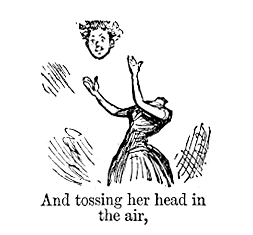|
Snowclone
A snowclone is a cliché and phrasal template that can be used and recognized in multiple variants. The term was coined as a neologism in 2004, derived from Journalese, journalistic clichés that referred to the number of Inuit words for snow. History and derivation The linguistic phenomenon of "a multi-use, customizable, instantly recognizable, time-worn, quoted or misquoted phrase or sentence that can be used in an entirely open array of different variants" was originally described by linguist Geoffrey K. Pullum in 2003. Pullum later described snowclones as "some-assembly-required adaptable cliché frames for lazy journalists". In an October 2003 post on '' Language Log'', a collaborative blog by several linguistics professors, Pullum solicited ideas for what the then-unnamed phenomenon should be called. In response to the request, the word "snowclone" was coined by economics professor Glen Whitman on January 15, 2004, and Pullum endorsed it as a term of art the next day. The ... [...More Info...] [...Related Items...] OR: [Wikipedia] [Google] [Baidu] |
Eskimo Words For Snow
The claim that Eskimo words for snow (specifically Yupik and Inuit words) are unusually numerous, particularly in contrast to English, is often used to support the controversial linguistic-relativity hypothesis or "Whorfianism". That strongest interpretation of this hypothesis, which posits that a language's vocabulary (among other features) shapes or defines its speakers' view of the world, has been largely discredited, though a 2010 study supports the core notion that these languages have many more words for "snow" than the English language. The original claim is based in the work of anthropologist Franz Boas and was particularly promoted by his contemporary, Benjamin Lee Whorf, whose name is connected with the hypothesis. Overview Franz Boas did not make quantitative claims but rather pointed out that the Eskimo–Aleut languages have about the same number of distinct word roots referring to snow as English does, but the structure of these languages tends to allow more va ... [...More Info...] [...Related Items...] OR: [Wikipedia] [Google] [Baidu] |
Inuit Words For Snow
The claim that Eskimo words for snow (specifically Yupik and Inuit words) are unusually numerous, particularly in contrast to English, is often used to support the controversial linguistic-relativity hypothesis or "Whorfianism". That strongest interpretation of this hypothesis, which posits that a language's vocabulary (among other features) shapes or defines its speakers' view of the world, has been largely discredited, though a 2010 study supports the core notion that these languages have many more words for "snow" than the English language. The original claim is based in the work of anthropologist Franz Boas and was particularly promoted by his contemporary, Benjamin Lee Whorf, whose name is connected with the hypothesis. Overview Franz Boas did not make quantitative claims but rather pointed out that the Eskimo–Aleut languages have about the same number of distinct word roots referring to snow as English does, but the structure of these languages tends to allow more va ... [...More Info...] [...Related Items...] OR: [Wikipedia] [Google] [Baidu] |
Cliché
A cliché ( or ) is an element of an artistic work, saying, or idea that has become overused to the point of losing its original meaning or effect, even to the point of being weird or irritating, especially when at some earlier time it was considered meaningful or novel. In phraseology, the term has taken on a more technical meaning, referring to an expression imposed by conventionalized linguistic usage. The term is often used in modern culture for an action or idea that is expected or predictable, based on a prior event. Typically pejorative, "clichés" may or may not be true. Some are stereotypes, but some are simply truisms and facts. Clichés often are employed for comedic effect, typically in fiction. Most phrases now considered clichéd originally were regarded as striking but have lost their force through overuse. The French poet Gérard de Nerval once said, "The first man who compared woman to a rose was a poet, the second, an imbecile." A cliché is often a vivid d ... [...More Info...] [...Related Items...] OR: [Wikipedia] [Google] [Baidu] |
Phrasal Template
A phrasal template is a phrase-long collocation that contains one or several empty slots which may be filled by words to produce individual phrases. Description A phrasal template is a phrase-long collocation that contains one or several empty slots which may be filled by words to produce individual phrases. Often there are some restrictions on the Grammaticality, grammatic category of the words allowed to fill particular slots. Phrasal templates are akin to form (document), forms, in which blanks are to be filled with appropriate data. The term ''phrasal template'' first appeared in a linguistic study of prosody (linguistics), prosody in 1983 but doesn't appear to have come into common use until the late 1990s. An example is the phrase "common stocks rose to ", e.g., "common stocks rose 1.72 to 340.36". The neologism "snowclone" was introduced to refer to a special case of phrasal templates that "clone" popular clichés. For example, a misquotation of Diana Vreeland's "Pink is ... [...More Info...] [...Related Items...] OR: [Wikipedia] [Google] [Baidu] |
Mad Libs
Mad Libs is a phrasal template word game created by Leonard B. Stern, Leonard Stern and Roger Price (comedy), Roger Price. It consists of one player prompting others for a list of words to substitute for blanks in a story before reading aloud. The game is frequently played as a party game or as a pastime. The game was invented in the United States, and more than 110 million copies of ''Mad Libs'' books have been sold since the series was first published in 1958. History Mad Libs was invented in 1953 by Leonard Stern and Roger Price. Stern and Price created the game, but could not agree on a name for their invention. No name was chosen until five years later (1958), when Stern and Price were eating Eggs Benedict at a restaurant in New York City. While eating, the two overheard an argument at a neighboring table between a talent agent and an actor. According to Price and Stern, during the overheard argument, the actor said that he wanted to "ad-lib" an upcoming interview. The a ... [...More Info...] [...Related Items...] OR: [Wikipedia] [Google] [Baidu] |
Meme
A meme ( ) is an idea, behavior, or style that spreads by means of imitation from person to person within a culture and often carries symbolic meaning representing a particular phenomenon or theme. A meme acts as a unit for carrying cultural ideas, symbols, or practices, that can be transmitted from one mind to another through writing, speech, gestures, rituals, or other imitable phenomena with a mimicked theme. Supporters of the concept regard memes as cultural analogues to genes in that they self-replicate, mutate, and respond to selective pressures. In popular language, a meme may refer to an Internet meme, typically an image, that is remixed, copied, and circulated in a shared cultural experience online. Proponents theorize that memes are a viral phenomenon that may evolve by natural selection in a manner analogous to that of biological evolution. Memes do this through the processes of variation, mutation, competition, and inheritance, each of which influences a meme's ... [...More Info...] [...Related Items...] OR: [Wikipedia] [Google] [Baidu] |
Inuit Languages
The Inuit languages are a closely related group of indigenous American languages traditionally spoken across the North American Arctic and adjacent subarctic, reaching farthest south in Labrador. The related Yupik languages (spoken in western and southern Alaska, as well as in nearby Russia's farthest east, though severely endangered there) are the two main branches of Eskaleut, a primary language family. The Inuit live primarily in three countries: Greenland (Kingdom of Denmark), Canada (specifically in Nunavut, Northwest Territories, the Nunavik region of Quebec, and the Nunatsiavut and Nunatuĸavut regions of Labrador), and the United States (specifically the coast of Alaska). The total population of Inuit speaking their traditional languages is difficult to assess with precision, since most counts rely on self-reported census data that may not accurately reflect usage or competence. Greenland census estimates place the number of speakers of varieties of Inuit languages th ... [...More Info...] [...Related Items...] OR: [Wikipedia] [Google] [Baidu] |
Glen Whitman
Douglas Glen Whitman is an American television writer and a professor of economics. Academic career Whitman is a professor of economics at California State University, Northridge, where he has been on the faculty since 2000. He has also served as a research fellow at the libertarian-oriented Independent Institute, a public policy think tank. His expertise is in microeconomics, applied game theory, and economic analysis of law. He received his Ph.D. in economics from New York University in 2000 and his undergraduate degree in economics and politics from American University in 1994. Whitman's 2014 book ''Economics of the Undead'', co-edited with James Dow, is an academic collection of essays that use zombies to explain and demonstrate concepts of economics. He is also the author of ''Strange Brew: Alcohol and Government Monopoly'' (2003). Screenwriting career In his second career, Whitman has written for the FOX science-fiction series ''Fringe'', the El Rey Network series '' ... [...More Info...] [...Related Items...] OR: [Wikipedia] [Google] [Baidu] |
Beige
Beige is variously described as a pale sandy fawn color, a grayish tan, a light-grayish yellowish brown, or a pale to grayish yellow. It takes its name from French, where the word originally meant natural wool that has been neither bleached nor dyed, hence also the color of natural wool. It has come to be used to describe a variety of light tints chosen for their neutral or pale warm appearance. ''Beige'' began to commonly be used as a term for a color in France beginning approximately 1855–60; the writer Edmond de Goncourt used it in the novel ''La Fille Elisa'' in 1877. The first recorded use of ''beige'' as a color name in English was in 1887. Beige is notoriously difficult to produce in traditional offset CMYK printing because of the low levels of inks used on each plate; often it will print in purple or green and vary within a print run. Various beige colors Cosmic latte Cosmic latte is a name assigned in 2002 to the average color of the universe (derived from a s ... [...More Info...] [...Related Items...] OR: [Wikipedia] [Google] [Baidu] |
Saddam Hussein
Saddam Hussein ( ; ar, صدام حسين, Ṣaddām Ḥusayn; 28 April 1937 – 30 December 2006) was an Iraqi politician who served as the fifth president of Iraq from 16 July 1979 until 9 April 2003. A leading member of the revolutionary Ba'ath Party, Arab Socialist Ba'ath Party, and later, the Ba'ath Party (Iraqi-dominated faction), Baghdad-based Ba'ath Party and its regional organization, the Arab Socialist Ba'ath Party – Iraq Region, Iraqi Ba'ath Party—which espoused Ba'athism, a mix of Arab nationalism and Arab socialism—Saddam played a key role in the 1968 coup (later referred to as the 17 July Revolution) that brought the party to power in Iraq. As vice president under the ailing General Ahmed Hassan al-Bakr, and at a time when many groups were considered capable of overthrowing the government, Saddam created security forces through which he tightly controlled conflicts between the government and the armed forces. In the early 1970s, Saddam nationalised the ... [...More Info...] [...Related Items...] OR: [Wikipedia] [Google] [Baidu] |
Gulf War
The Gulf War was a 1990–1991 armed campaign waged by a 35-country military coalition in response to the Iraqi invasion of Kuwait. Spearheaded by the United States, the coalition's efforts against Iraq were carried out in two key phases: Operation Desert Shield, which marked the military buildup from August 1990 to January 1991; and Operation Desert Storm, which began with the aerial bombing campaign against Iraq on 17 January 1991 and came to a close with the American-led Liberation of Kuwait on 28 February 1991. On 2 August 1990, Iraq invaded the neighbouring State of Kuwait and had fully occupied the country within two days. Initially, Iraq ran the occupied territory under a puppet government known as the "Republic of Kuwait" before proceeding with an outright annexation in which Kuwaiti sovereign territory was split, with the "Saddamiyat al-Mitla' District" being carved out of the country's northern portion and the "Kuwait Governorate" covering the rest. Varying spe ... [...More Info...] [...Related Items...] OR: [Wikipedia] [Google] [Baidu] |
Hyperbole
Hyperbole (; adj. hyperbolic ) is the use of exaggeration as a rhetorical device or figure of speech. In rhetoric, it is also sometimes known as auxesis (literally 'growth'). In poetry and oratory, it emphasizes, evokes strong feelings, and creates strong impressions. As a figure of speech, it is usually not meant to be taken literally. Etymology 'Hyperbole' is derived from the grc, ''huperbolḗ'' by way of Latin. The word is composed from ''hupér'' 'above, beyond' and ''bállō'' 'throw'. Unlike most English words beginning with ''hyper-'', it is stressed on the second syllable. The first known use is in the 15th century. 'Hype' is a shortened version. Usage Hyperbole is often used for emphasis or effect. In casual speech, it functions as an intensifier: saying "the bag weighed a ton" simply means that the bag was extremely heavy. The rhetorical device may be used for serious or ironic or comic effects. Understanding hyperbole and its use in context can help un ... [...More Info...] [...Related Items...] OR: [Wikipedia] [Google] [Baidu] |





